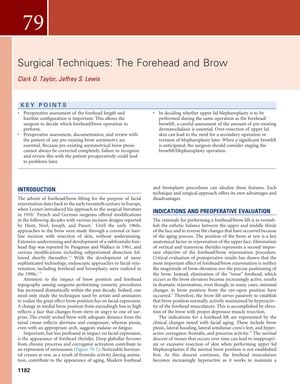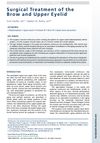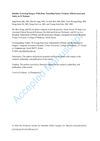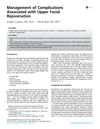Surgical Techniques for Forehead and Brow Lifting
January 2017
in “
Elsevier eBooks
”
forehead lifting brow lifting facial rejuvenation preoperative assessment forehead length hairline configuration brow asymmetry brow ptosis hyperactive forehead musculature upper lid blepharoplasty coronal approach pretrichial approach tricophyllic approach mid-forehead lift direct browpexy endoscopic approaches anesthesia postoperative care alopecia scalp irregularities forehead lift brow lift face rejuvenation pre-op assessment hairline drooping brow overactive forehead muscles upper eyelid surgery coronal lift pretrichial lift tricophyllic lift direct brow lift endoscopic lift post-op care hair loss scalp issues

TLDR The document concludes that choosing the right forehead and brow lifting technique based on individual patient characteristics is crucial to prevent complications and achieve desired results.
The document from 2017 reviews the evolution, techniques, and considerations of forehead and brow lifting surgeries, which are aimed at facial rejuvenation. It emphasizes the importance of preoperative assessment to tailor the surgical approach to individual patient needs, considering factors such as forehead length, hairline configuration, and brow asymmetry. The history of the procedure is traced from 1910 to the development of endoscopic techniques in the 1990s. The document outlines indications for the surgery, such as brow ptosis and hyperactive forehead musculature, and the need to establish normal brow position before upper lid blepharoplasty. Various surgical techniques are described, including coronal, pretrichial and tricophyllic, mid-forehead lift, direct browpexy, and endoscopic approaches, each with their indications and potential complications. The tricophyllic procedure is preferred for patients without an excessively low hairline, and the document provides a detailed description of the coronal approach. It also discusses anesthesia, postoperative care, complications, and presents case studies, but notes the lack of long-term studies on the relapse rate of brow ptosis after endoscopic lifting. The document concludes by highlighting the importance of considering hair characteristics to prevent complications such as alopecia and scalp irregularities.




